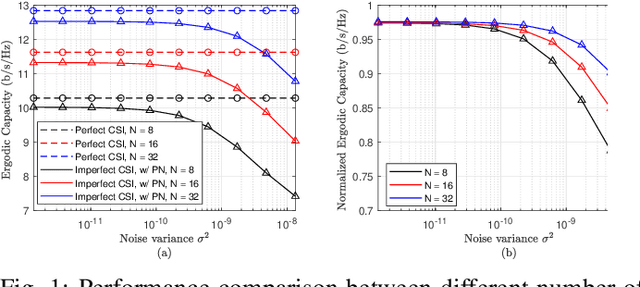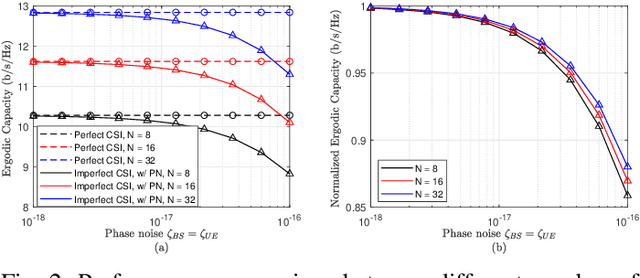Chu Li
FPN-fusion: Enhanced Linear Complexity Time Series Forecasting Model
Jun 06, 2024Abstract:This study presents a novel time series prediction model, FPN-fusion, designed with linear computational complexity, demonstrating superior predictive performance compared to DLiner without increasing parameter count or computational demands. Our model introduces two key innovations: first, a Feature Pyramid Network (FPN) is employed to effectively capture time series data characteristics, bypassing the traditional decomposition into trend and seasonal components. Second, a multi-level fusion structure is developed to integrate deep and shallow features seamlessly. Empirically, FPN-fusion outperforms DLiner in 31 out of 32 test cases on eight open-source datasets, with an average reduction of 16.8% in mean squared error (MSE) and 11.8% in mean absolute error (MAE). Additionally, compared to the transformer-based PatchTST, FPN-fusion achieves 10 best MSE and 15 best MAE results, using only 8% of PatchTST's total computational load in the 32 test projects.
LabelAId: Just-in-time AI Interventions for Improving Human Labeling Quality and Domain Knowledge in Crowdsourcing Systems
Mar 14, 2024



Abstract:Crowdsourcing platforms have transformed distributed problem-solving, yet quality control remains a persistent challenge. Traditional quality control measures, such as prescreening workers and refining instructions, often focus solely on optimizing economic output. This paper explores just-in-time AI interventions to enhance both labeling quality and domain-specific knowledge among crowdworkers. We introduce LabelAId, an advanced inference model combining Programmatic Weak Supervision (PWS) with FT-Transformers to infer label correctness based on user behavior and domain knowledge. Our technical evaluation shows that our LabelAId pipeline consistently outperforms state-of-the-art ML baselines, improving mistake inference accuracy by 36.7% with 50 downstream samples. We then implemented LabelAId into Project Sidewalk, an open-source crowdsourcing platform for urban accessibility. A between-subjects study with 34 participants demonstrates that LabelAId significantly enhances label precision without compromising efficiency while also increasing labeler confidence. We discuss LabelAId's success factors, limitations, and its generalizability to other crowdsourced science domains.
Enhancing the Secrecy Rate with Direction-range Focusing with FDA and RIS
Jan 26, 2024



Abstract:One of the great potentials to improve the confidentiality in mmWave/THz at the physical layer of technical communication, measured by the secrecy rate, lies in the use of reconfigurable intelligent surfaces (RISs). However, an important open problem arises when the eavesdropper is aligned with the legitimate user or in proximity to the RIS or legitimate user. The limitation comes, on one hand, from the high directional gain caused by the dominant line-of-sight (LOS) path in high-frequency transmission, and, on the other hand, from the high energy leakage in the proximity of the RIS and the legitimate user. To address these issues, we employ the concept of frequency diverse arrays (FDA) at the base station (BS) associated with random inverted transmit beamforming and reflective element subset selection (RIBES). More specifically, we consider a passive eavesdropper with unknown location, and design the transmit beamforming and RIS configuration based on the channel information of the legitimate user only. In this context, the secrecy rate with the proposed transmission technique is evaluated in the case of deterministic eavesdropper channel, demonstrating that we can ensure a secure transmission regarding both direction and range. Furthermore, assuming no prior information about the eavesdropper, we describe the wiretap region and derive the worst-case secrecy rate in closed form. The latter is further optimized by determining the optimal subset sizes of the transmit antennas and reflective elements. Simulations verify the correctness of the closed-form expressions and demonstrate that we can effectively improve the secrecy rate, especially when the eavesdropper is close to the RIS or the legitimate user.
IRS-Assistance with Outdated CSI: Element subset selection for secrecy performance enhancement
Nov 16, 2022
Abstract:In this work, we investigate the secrecy performance in an intelligent reflecting surface (IRS)-assisted downlink system. In particular, we consider a base station (BS)-side IRS and as such, the BS-IRS channel is assumed to be known perfectly. Of more importance, we consider the case, in which only outdated channel state information (CSI) of the IRS-user channel is available. We study the impact of outdated CSI on the secrecy performance numerically and analytically. Furthermore, we propose an element subset selection (ESS) method in order to improve the secrecy performance. A key observation is that minimal secrecy outage probability (SOP) can be achieved using a subset of the IRS, and the optimal number of selected reflecting elements can be effectively found by closed-form expressions.
On the Impact of Oscillator Phase Noise in an IRS-assisted MISO TDD System
Jul 06, 2021

Abstract:In this work, we study the impact of the multiplicative phase noise in an IRS-assisted system. We consider an IRS-assisted system with multiplicative phase noise both at the BS and user. A novel channel estimation algorithm is proposed considering the phase noise. By utilizing the proposed channel estimates we investigate the system performance in the downlink, more specifically, we derive the ergodic capacity in closed form. Simulation results verify the correctness of the closed-form expression. We observe that the system becomes more robust against the phase noise as the number of reflective elements increases. Moreover, the influence of the additive channel noise in uplink vanishes as the number of reflecting elements grows asymptotically large.
Kalman filter based MIMO CSI phase recovery for COTS WiFi devices
Jan 15, 2021


Abstract:Recently channel state information (CSI) measurements from commercial multi input multi output (MIMO) WiFi systems have been ubiquitously used for different wireless sensing applications. However, the phase of the CSI realizations is usually distorted severely by phase errors due to the hardware impairments, which significantly reduce the sensing performance. In this paper, we directly utilize the modeling of the phase distortions caused by the hardware impairments and propose an adaptive CSI estimation approach based on Kalman filter (KF) with maximum a posteriori (MAP) estimation that considers the CSI from the previous time. The performance of the proposed algorithm is compared against the Cramer Rao lower bound (CRLB). Simulation and experimental results demonstrate that our approach can track the channel variations while eliminating the phase errors accurately.
Spoofing attack detection in dynamic channels with imperfect CSI
Jan 15, 2021



Abstract:Recently, channel state information (CSI) at the physical-layer has been utilized to detect spoofing attacks in wireless communications. However, due to hardware impairments and communication noise, the CSI cannot be estimated accurately, which significantly degrades the attack detection performance. Besides, the reliability of CSI based detection schemes is challenged by time-varying scenarios. To address these issues, we propose an adaptive Kalman based detection scheme. By utilizing the knowledge of the predicted channel we eliminate the channel estimation error, especially the random phase error which occurs due to the lack of synchronization between transmitter and receiver. Furthermore, we define a Kalman residual based test statistic for attack detection. Simulation results show that our proposed scheme makes the detection more robust at low signal-to-noise ratio (SNR) and in dynamic scenarios.
 Add to Chrome
Add to Chrome Add to Firefox
Add to Firefox Add to Edge
Add to Edge